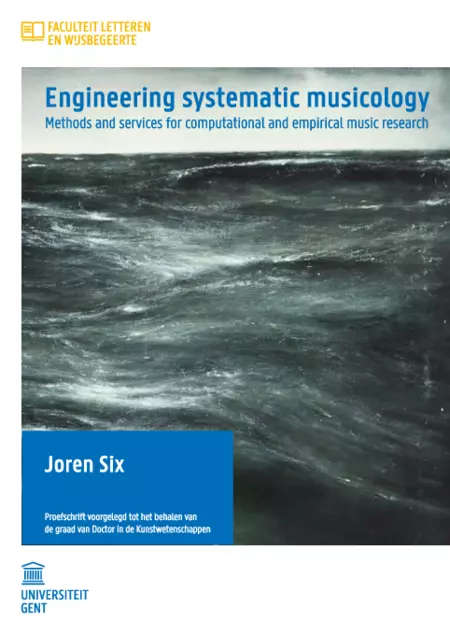Author version | Version of record | Further information
Publication type: Dissertation
Abstract: One of the main research questions of *systematic musicology* is concerned with how people make sense of their musical environment. It is concerned with signification and meaning-formation and relates musical structures to effects of music. These fundamental aspects can be approached from many different directions. One could take a cultural perspective where music is considered a phenomenon of human expression, firmly embedded in tradition. Another approach would be a cognitive perspective, where music is considered as an acoustical signal of which perception involves categorizations linked to representations and learning. A performance perspective where music is the outcome of human interaction is also an equally valid view. To understand a phenomenon combining multiple perspectives often makes sense. The methods employed within each of these approaches turn questions into concrete musicological research projects. It is safe to say that today many of these methods draw upon digital data and tools. Some of those general methods are feature extraction from audio and movement signals, machine learning, classification and statistics. However, the problem is that, very often, the *empirical and computational methods require technical solutions* beyond the skills of researchers that typically have a humanities background. At that point, these researchers need access to specialized technical knowledge to advance their research. My PhD-work should be seen within the context of that tradition. In many respects I adopt a problem-solving attitude to problems that are posed by research in systematic musicology. This work *explores solutions that are relevant for systematic musicology*. It does this by engineering solutions for measurement problems in empirical research and developing research software which facilitates computational research. These solutions are placed in an engineering-humanities plane. The first axis of the plane contrasts *services* with *methods*. Methods *in* systematic musicology propose ways to generate new insights in music related phenomena or contribute to how research can be done. Services *for* systematic musicology, on the other hand, support or automate research tasks which allow to change the scope of research. A shift in scope allows researchers to cope with larger data sets which offers a broader view on the phenomenon. The second axis indicates how important Music Information Retrieval (MIR) techniques are in a solution. MIR-techniques are contrasted with various techniques to support empirical research. My research resulted in a total of thirteen solutions which are placed in this plane. The description of seven of these are bundled in this dissertation. Three fall into the methods category and four in the services category. For example Tarsos presents a method to compare performance practice with theoretical scales on a large scale. SyncSink is an example of a service.
Cite this article:
@phdthesis{six2018phd,
author = {Six, Joren},
keyword = {Music Information Retrieval,Systematic Musicology,
Digital Humanities,Reproducibility},
language = {eng},
school = {Ghent University},
title = {Engineering systematic musicology : methods and services
for computational and empirical music research},
year = {2018}
}

